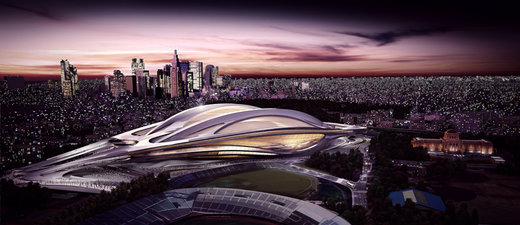23 April 2014
The Tokyo metropolitan government has estimated that the cost of building and refurbishing venues for the 2020 Tokyo summer Olympics will increase to about $3.7bn, more than double the initial estimate of $1.5bn.
Officials said the increase was caused by inflation in Japan’s construction sector due to the high demand for reconstruction work in the wake of the Great East Japan Earthquake in 2011.
But because authorities have allocated about $4bn to the programme, the increase in construction costs is not expected to create delays to the schedule.
The cost of hosting the Games will be shared between the central government, the Tokyo organising committee, and the metropolitan government.
The authorities’ relaxed attitude to the expanding budget is partly the result of their policy of boosting aggregate demand in the economy by pumping public money into it.
It also reflects Japan’s long struggle with deflation-its retail prices index began falling in 1994 and has continued to decline in most years since then.
The price tag for the Games has also been affected by changes in some of the projects, such as the Sea Forest Waterway, which is the planned venue for canoe races and other events in the Central Breakwater of Tokyo Bay.
The government has learned that the construction method planned for this course will be difficult to carry out, and that as a result the cost of this venue will increase to almost 10 times the initial figure.
An early start
The government is using the Olympics as a rallying point in the drive to end Japan’s 25 years of sluggish economic growth.
Yesterday prime minister Shinzo Abe said the Games would “give us momentum to revitalise our country … We will accelerate reconstruction in areas affected by the Great East Japan Earthquake and will convey our recovery to the world.”

Zaha Hadid Archticts’ design for Japan’s new national stadium (Zaha Hadid Architects)
“Tokyo Vision 2020: Driving change in Japan” is an eight-goal strategy that is broken down into three-year “action programmes”.
The present segment, which runs between 2013 and 2015), prescribes 363 construction projects, together worth $26.5bn, including the seismic retrofit of buildings and the construction of emergency transport roads.
One major structure marked for retrofitting is the Yoyogi National Stadium, the main site of the 1964 Games designed by KenzŠTange, which is to be refurbished to a design by Zaha Hadid Architects. When completed, this will be the most expensive stadium in the world.
The use of infrastructure spending to create demand in the economy has been a settled policy of successive Japanese governments, but it is hoped that the Olympics will add extra momentum.
Yoichi Masuzoe, the governor of Tokyo, told Reuters in February: “We have come out of the recession and this economic growth is very important. As governor I want to sustain this momentum.”
Some areas of Tokyo are already experiencing the effects of the Olympics, with property prices along the bay, where the Olympic park will be built, rising by up to 300%, according to the Japan Daily Today.
The latest example of infrastructure spending was announced this week by the mayor of Koto, one of Tokyo’s municipal districts.
He said a feasibility study was under way into the construction of a cable car to link Olympics venues with the Ginza shopping area.
The project, costed at $210m, would aim to lure to Koto some of the estimated 10 million visitors and staff who will visit Tokyo over the 19-day period of the Games.






